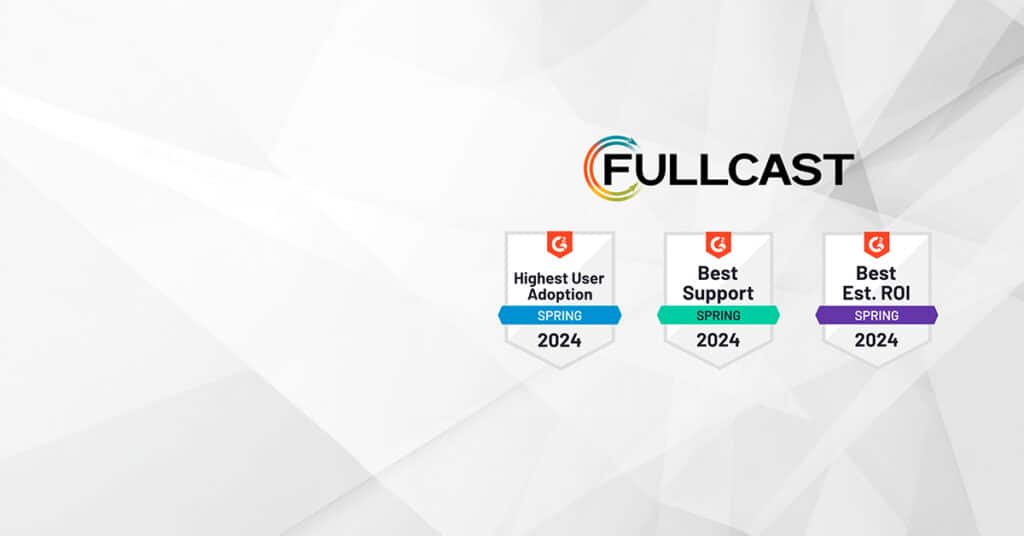This article was posted by Sales Hacker on October 10, 2019. You can view the original article here.
Reliable data is everything…
Without it, your sales team will struggle, the pipeline will dry up, and revenue will plummet.Any change to the business — whether its a simple change to your product’s pricing or packaging, or an acquisition requiring the integration of new CRM data with your existing data — means your system needs to be adapted.The challenge? Being able to scale easily.It’s not an easy task…Which is why I’m going to outline some key concepts that should be considered and some pitfalls to avoid when designing the CRM process for a lead-to-cash cycle.Here’s what we’re going to cover:
- Salesforce objects
- Why bother?
- Sales process stages
Fair warning: This gets technical, so hold onto your seat.
Data Governance & Salesforce Objects
Whether your selling model is transactional, self-service, enterprise, or a combination of these, you will need to set up some objects in Salesforce that support the sales and eventual retention strategies of your business.Salesforce objects can be categorized as either Transactional or Customer Records.
Customer Record Objects
Customer Records store firmographic and technographic data.Firmographic data is relevant for customer segmentation, with information about geographic area, number of employees, annual revenue, and industry. Technographic data records the types of technologies used by the business.Some examples of Customer Record objects:
- Accounts
- Contacts
While relatively static, customer information degrades in quality at a rate of just over 5% per month, or 70.3% per year.After a year without any activity logged on an account or contact, there is a 7/10 chance the information is no longer correct. It is likely the person has changed roles within the company, moved to a different company or location, or the company could have merged or re-branded.Tip: A policy needs to be established around when and how frequently the accuracy of Customer Record objects are verified.This is a non-negotiable requirement for any sales organization that intends to maintain a usable database. Come up with a plan to check and refresh existing Customer Records on an ongoing basis.
Transactional Objects
Transactional objects capture transient customer interactions throughout the sales process.Sales cycles vary from customer to customer since budget, decision process, and timing are different in every sale. That being the case, the current state of the buyer should be reflected in the data collected throughout the sale.Examples of transactional objects:
- Campaigns
- Leads
- Activities
- Opportunities
- Quotes
- Orders
- Subscriptions (custom object)
- Contracts
The tendency in modern B2B SaaS orgs is to record most of the transactional data in the opportunity or account objects. People often think it is extra work to separate relevant data into objects, and salespeople are commonly perceived as incapable of recording meticulous data across different object types and seeing larger purpose in the CRM system.In reality, salespeople today are technologically adept and spend up to 30% of their time dealing with the results of inconsistent data governance. Enforcing the perceived extra work is worth it.Sales reps would be 30% more effective if they didn’t have to navigate duplicate accounts, incorrect prospect information, and other preventable scenarios where the root cause is an incomplete or inconsistent data structure.This is just the icing on the cake — building a scalable data model allows for accurate analysis and predictable revenue generation.
The Right Object for the Right Process
When designing this process from the ground up, flexibility should be built in. Using the right object for the right process is a key element of setting up a Salesforce instance.Usually people are clear that leads are someone who has shown interest in the product at a particular point in time, and that they come from marketing campaigns. But sales professionals sometimes think of leads in terms of customer contact information.The difference is that a lead object in Salesforce represents how a prospect acted at a particular point in time, whether they attended a webinar, downloaded a whitepaper, or filled out a web form.Any good sales rep knows they should probably respond to this activity within about 20 minutes for the best chance of generating a sales opportunity.
Time for a quick math problem…
You assign a list of gated content leads with name, company info, phone number, and email addresses that downloaded a whitepaper at least 6 months ago.After the SDR reaches out to all 100 of them, Salesforce task records show 10 people replied something analogous to “no thank you” and another 2 responded asking for meetings.What was the response rate?Answer: The trap answer is to calculate 12/100, for a reply rate of 12%. But remember, after 6 months of sitting on the shelf, the quality of the customer information has degraded by 30%, even though these are lead objects.So here’s how to calculate:You can safely assume 100 * 0.3 = 30 of your leads didn’t get the message. So subtract those 30 leads from the 100 you sent: 100 – 30 = 70 leads.Then 12/70 = 17.1% reply rate.This is an example of where data hygiene can impact sales process analysis.Tip: Leads should be considered as separate objects from accounts and contacts. Assigning an SDR old leads is similar to assigning them detective work, which takes away from selling time.Remember, a lead represents a moment in time as well as customer information, so it is a transactional object. Be careful to avoid creating duplicate accounts when converting a lead object to an account and contact object. It is okay to purge old leads!
Actions performed by SDRs and AEs are usually tracked with activities like tasks and events. These objects are essential for tracking rep activity and performance and are often used as key performance indicators (KPIs) for SDRs.
Opportunity objects are created when a prospect enters the sales pipeline. Setting up the quote object will allow for flexibility and historical context around pricing and packaging. Most are familiar with the concept of a quote and contract to finish a sale, and recording this data in Salesforce objects is vital for reporting metrics.The concept of an order is usually brushed aside in the software industry and reserved for brick and mortar businesses.If your business is only selling software, the system will probably work exactly as intended without the concept of an order object. But if you are selling software and services and more than one product type, orders and subscriptions will be useful for seamlessly passing “inventory” data through the system.Most software companies sell professional services, subscriptions, or both. Companies that grow often acquire other companies, so your chances of acquiring a Salesforce instance with a different structure than your own seems likely. Incorporating these objects in the system early in a way that allows for different product types later will pay dividends.
Why Bother?
Say you’re selling a subscription-based software and your CRM process only uses lead,opportunity, and contract objects. It seems more efficient, right?But let’s say your company is doing so well, you acquire another company that sells software and services. Now you need to merge their Salesforce account with yours in some meaningful way, and theirs was set up with custom objects to represent their particular products and services, and they export this data in a spreadsheet for finance to assign commissions and invoices.Reconciling all of these transactions in one unifying system will take many hours. In this case, the entire process was made more difficult by both sides omitting the concept of an order object in Salesforce.Integrating an external Salesforce instance can take 4–6 months or longer, and companies may have to seek outside consultants when there’s no bandwidth internally.In general, the way a modern software company’s offering is packaged and priced will change over time. The underlying architecture of the sales process should be dynamic and robust from the start.When a Salesforce instance is set up, it is usually done with a sales-centric view, for obvious reasons. It makes sense to optimize the instance for the current sales process or even for the sales process in general.So the account and opportunity objects are heavily relied on to record customer data throughout the buyer journey, since this option offers the least complexity up-front and puts less pressure on sales reps to update the system.The buyer’s journey is not just a sales process, though. It usually starts with some kind of campaign and ends with an exchange of cash, all managed by teams beyond sales.Tip: You need an organizational perspective when setting up the process to record customer and transaction data as the business operates. Relying solely on the account and opportunity objects leads to chaos later on.
Sales Process Stages
Now, let’s look at a typical transactional sales process that starts with a marketing campaign and ends with a paying customer. Notice that objects to the left are highly volatile, and further to the right objects are relatively stable, maintaining their integrity for a longer time.

In order for the lead-to-cash cycle to close, the following stages of data transfer need to be managed:
- Campaign > Lead
- Lead > Opportunity
- Opportunity > Order
- Order > Invoice
- Order > Commissions
There are multiple departments involved throughout the process. Marketing runs campaigns and generates leads, the sales team handles opportunities, and finance teams run invoicing and commissions. Each of these teams should be able to easily access the data they need.
How This Works for Account-Based Sales
If your company is using an account-based selling strategy, the process would need to be modified. Usually, leads are passed to an SDR team, who also have a pool of accounts and contacts to work.Account-based selling should start with a clear picture of the accounts that will be assigned to SDRs, including how and when they will be passed leads from marketing.It requires an even more meticulous data structure and adds operational complexity since the account objects would need to be created and filled with appropriate contacts near the beginning of the process for assignment, or created by the SDR.Tip: Never overwrite SDR data! SDR data is typically the most reliable since they are on the front lines and their data is the most current, but they are most often junior-level employees who need training to implement a well-defined procedure.The stages might look something like this:
- Campaign > Lead
- Lead > Opportunity
- Contact > Opportunity
- Opportunity > Order
- Order > Invoice
- Order > Commissions
Notice that the stages are the same except for number 3.This adds a layer on the back end since contacts need to be associated with an account, which would need to be created ahead of time instead of waiting until the account management phase.A recommendation for predictable revenue would be:
- Conduct a total addressable market (TAM) analysis to help guide segmentation into territories or market segments
- Assign the SDR teams accounts strategically
For this reason, switching to an account-based selling strategy requires extra careful preparation from an operational standpoint.
Back to You
These are the types of scenarios you need to consider when you’re trying to set up a scalable sales process for your business.To build a dynamic and flexible system that allows you to effectively scale a business at some point in the future, you need both creativity and intuition. An attitude of, “I’ll worry about it when you get there,” will cost you.Is data governance a priority in your org? What’s your biggest challenge with keeping your data updated?











